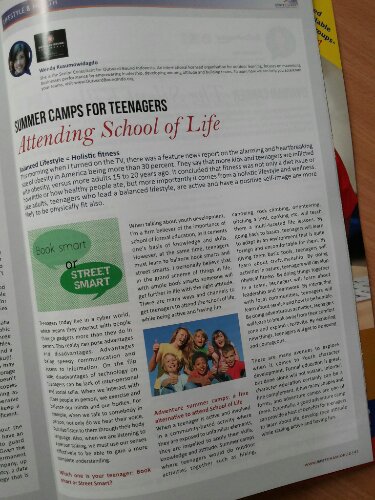My eight-year-old nephew is the poster child of generation Z: a bright, sophisticated kid who is globally, technologically and visually oriented. He and I had recently played a strategy board game which he very much took an interest in. Last week he requested that we play it again. He was sad that I didn’t have the board game in my possession at the time. Consequently, I went on an “activity” quest to entertain the boy and decided hangman to be the simplest and most effective.
The other day, I was reading an article about why kids of the ‘80s are tougher than kids today. Kids were allowed to play and explore without a constant watchful eye. Helmets, knee-pads and wrist guards were not a thing. Casts were badges of honour for kids. And parents didn’t feel shameful or neglectful when their kids broke bones.
The backseat of a car was a playground where you could sit whichever way. The article depicts how playtime back in the day involved more risks and essentially, no activities were off-limits for kids. Additionally, playing alone was almost never an option.
Being an ‘80s kid myself, as I read the list, I couldn’t help but smile and nod. As a five-year-old, together with my older siblings, we would put together stories and make drawings on index cards to play as puppets. We would build a stage on our bed, using pillows and a blanket hung by a string tied to a door and a hook on the wall. Between the three of us, we took turns as actors; voice-overs and puppeteering were tasks divided three-way. We improvised the whole production with no prompting, direction or supervision from an adult, nor any audience.
_____
Similarly, shooting hoops with all the neighborhood kids in the afternoon and exploring jalan tikus on a bike with my cousins seemed second nature and, in fact, were something we looked forward to every day.
_____
We couldn’t wait to go out to play with our friends at every chance we had. We called this fun. We called this playtime. Play meant interacting with other kids. It meant being engaged in some sort of physical activities. It meant capitalizing on the (lack of) resources; i.e. the toys we had. It meant creating and exploring new things or places. It meant expanding our imagination. The question is, were those things merely fun and games?
I suspect the Baby Boomers and Generation Xers would strongly argue that they had something to do with building character, with developing skills—resourcefulness, problem-solving and enterprise thinking, with courage and with exercising a person’s mental physique. I tend to advocate this notion.
Is the ‘80s childhood experience becoming rare for kids these days? Has the greater playground been replaced and limited to the confines of a children’s area in a shopping mall? Has the limited repertoire of entertainment been upgraded by the all-purpose devices? Have the natural impulses to play and be active been diminished into a scheduled time for exercise? Would it be an old-school stance to presume that, despite the modernisation and advancements that have provided us with easier lives, there’s a lot to be said about the rusticity and primitiveness of one’s childhood?
This article has been published by Now! Jakarta magazine












